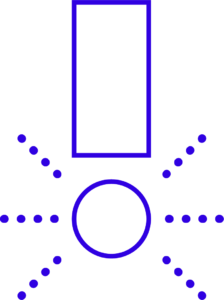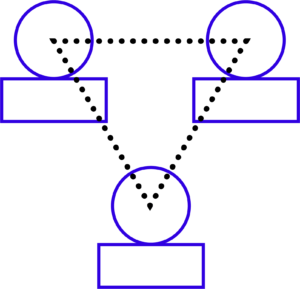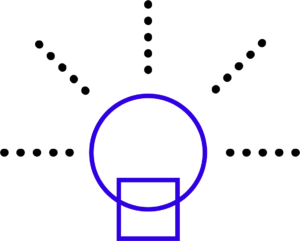The design industry has reached a new level of maturity. Over the past 12 months companies have pivoted, adapted and defined new business models. This was possible because of design. Designers have met their moment in history, equipped with the skills that the next world needs.
However, with great success, comes great responsibility. Teams have grown, financial investment has increased and most importantly the door to the c-suite is standing open.
How as designers do we manage these opportunities? How do we grow creative environments to attract top talent? How do we consistently deliver quantifiable results for our projects?
The answers to these questions are unfolding in real time around the world as designers test new limits and explore new horizons of what is possible. We have begun exploring the exciting new leadership trends that have emerged as we design our new place in the future.
Competitive Design Parity
Design has reached a new level of sophistication in the marketplace. The design of anything from the facade of a shop front, to a logo or an app has reached equal levels of appeal. Design around the world has matured and through this process of growth and rapid adaptation it has begun to reach parity. It is visually pleasing, highly functional and looks very similar.
This is both a blessing and a curse. Good design is no longer a nice to have. It is seen as business critical for success. However, there is a problem when everyone has equally good design. It begins to look the same and indistinguishable from each other.
Designers need to push their products and services to new levels to delight their audiences. The expectations have risen and now designers need to use their leadership skills to not only push the envelope, but to explain why this push is necessary. Designers need to upskill, not only to create more impactful outputs but to find the right support across the organisation to get it over the line.
Better Ways To Measure Impact
A recent report from Abstract states that, “57% their organization expects them to measure and report their team’s outcomes. 58% of design leaders said the ability to measure and quantify the impact of their team’s work would make design more valuable at the organizational level, and 63% of design leaders said that measuring and reporting results is “very important” to communicating the value of time spent.”
The problem is there are very few standardised processes for measuring the true impact of design. This means that design leaders and teams are collecting quantitative and qualitative data without formalised systems for conveying the impact or meaning of the research. This means that design leaders are creating their own processes. With the continuing evolution of design maturity within organisations the time to work globally to create new systems and approaches has never been more important.
Rapid Team Growth
The same report from Abstract indicates that as different specialisations of designers have become more niche, the size of the teams have grown. Their growth indicates that 3 out of 4 designers said they plan to add up to 5 new people to their team this year.
With this growth comes more complexity within design teams themselves. There are additional considerations within the hiring process. The design industry job market is hot and many organisations are struggling to fill open positions. This means that traditional methods for hiring and acquiring talent are not as effective. As design leaders growing and integrating the right team has become more complex. This means that having a global network of professionals to learn from and source talent from are becoming even more critical.
A Focus On Remote Creativity
In the new normal of design, teams are working in new ways. Some teams are able to work in person, some are distributed remotely, and some are a hybrid of both. Regardless of how teams are coming together, a renewed focus on creativity is becoming critical.
Design leaders are learning how to create, grow and nurture teams in new ways. They understand that the glue that holds these teams together is their shared love of creativity. It is also expanding the importance of creativity in the role of design itself.
Designers are in hot demand as their influence expands within organisations. Design leaders are discovering new ways to retain their current team members and attract new talent. As a design leader, it is critical to create an environment for teams to thrive, shine and unleash their creative potential.
Design leaders are now investigating new ways to successfully integrate hybrid and remote teams. They are developing processes that allow all their teams to flourish and create further opportunities for their careers.
Changed Service Offerings
Traditionally the role of a designer was defined by what type they were, and the output they produced. For example, a service designer may work primarily in research and produce customer journey maps. Things have changed and the role and outputs have been transformed as the influence of design is recognised as critical for any business looking to grow.
Designers are now being asked to solve the big sticky problems of the world. Something they have been longing to do their whole careers. Designers are equipped with the curiosity and skills necessary to go out and innovate.
Designers have been asking to perform at the more strategic levels of government, organisations and society for years. However, now with so many people, projects and problems to consider it can feel overwhelming.
This is how design leadership is creating forward momentum. A good leader uses their team’s curiosity, capabilities and creativity to get strategic and start thinking big. The world is hungry for design and the design industry needs new leaders to step up to the challenge and create the solutions of the future.
AI Is Changing Designers
The scope of what can be designed is being expanded by artificial intelligence. The future of how designers will work with AI is just beginning and full of exciting new potential.
Cognitive experience design is one of these new avenues. CognitiveXD or CXD can be described as the practice of using artificial intelligence technologies to reduce the human mental effort and time required to complete a task. Desired Podcast guest Joanna Peña-Bickley, head of Research & Design for Alexa Devices at Amazon, is a design leader who is working at the cutting edge of this technology.
Joanna says that, “CxD is the art of empathetically respecting an individual’s time and choices while balancing the science of crafting data into intelligent individualised experiences that lead conscious decisions.”
Generative design also uses AI but focuses on creating processes that design themselves with minimal human guidance. It leverages artificial intelligence and machine learning to turn design processes into thousands of options by simply defining the problem. The process creates and then refines options based on previous iterations.
As AI takes on the role of designer in the future, the role of the human is that of leader within the machine human relationship. While these trends are still emerging the ultimate direction is clear. The future will favor a designer who is actively progressing their own leadership journey.
Leading With Confidence
We are living in a liminal space, a time between time. We are leaving behind our old ways of living and working and entering a new one. It is becoming incredibly clear that the role of designer will be a leader through this transition.
It has never been more important for designers to prepare for the next steps in their career. As a design leader we will be asked to step forward and define not only what design is and can achieve, but what impact design can have on the world.
The 21rst century will be defined by the changes the world goes through. Design can and does create positive change. As an industry we must become diplomats of change and grow the influence of design within organisations.
Feel ready to take on the challenges ahead? Then you are ready to become a design leader. Explore our masterclass series, Design Leadership is the first step because design is leadership.
https://schoolofdesignthinking.echos.cc/designleadership/
—
Follow us on social
Instagram – Facebook – LinkedIn – Youtube – Spotify
How Can We Help?
- For training and Innovation Journeys in your company: check out our in-house course offering.
- For upcoming courses in your region: visit our website.
- For upcoming events in your region: look at our event calendar.
- If you have a special project and would like to use Echos’ consultancy services: send us an email.
- Want to speak to a real person? Call us on 1300 502 006






